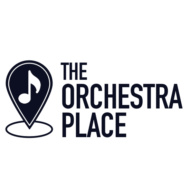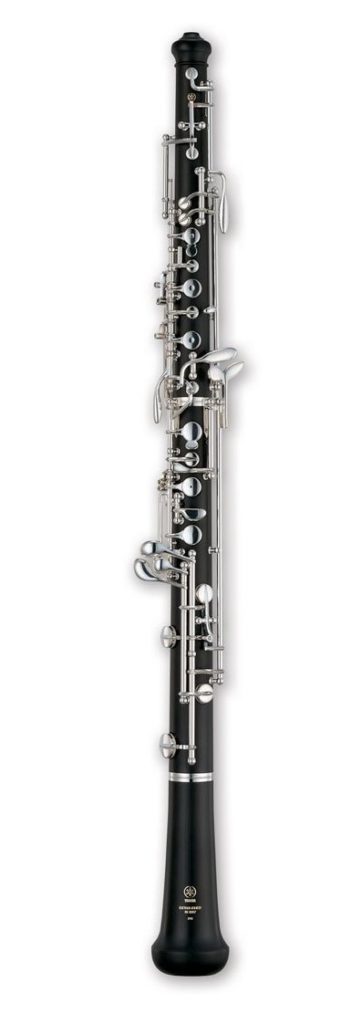Introduction
The oboe is a versatile woodwind instrument with a double reed and a long cylindrical body with a conical bore that plays a prominent role in the orchestra. The tone produced by the oboe can be heard distinctly, making it perfect for solo lines and featured parts.
One of the key differences between the oboe and the clarinet, which the oboe is sometimes mistaken for, is the type of bore used. The clarinet has a cylindrical bore, while the oboe has a conical one. This accounts for a large part of the difference in tone between the two instruments.
Which Oboe Should I Choose?
The Orchestra Place requires all students to have an instrument from the teacher-approved brand list to ensure the best experience and sound for the student and the ensemble.
For beginners, we recommend the Yamaha Standard Oboe as the best beginning oboe for quality and affordability.
The Yamaha YOB-241 Oboe features a more economical ABS resin body oboe utilizing a simplified Conservatoire system, making it is easier to play for beginners. However, this oboe has a surprisingly precise intonation which permits students to concentrate more on developing their own musical nuances. But there is nothing ‘student-like’ about the rich and colorful sound. The new bore design which incorporates vertical integration is similar to that of the YOB-841 professional model, resulting in improved projection and improved tonal qualities. The 241 features a characteristically warm oboe tone which sounds very close to that of a professional instrument, so even a complete beginner will quickly develop a beautiful tone.
The new bore design which incorporates vertical integration is similar to that of the YOB-841 professional model. This results in improved projection and improved tonal qualities.
Also similar to the YOB-841, the new taper to the tone hole design provides the player with a smooth response and even intonation.
The Instrument Place offers the Yamaha Standard Oboe outfit with the Yamaha hard shell case, 5 year warranty, and a free music stand.
Back to topHow Much Should an Oboe Cost?
A good-quality, brand-new student oboe may be purchased for about $1700. An intermediate instrument may cost about $3000 and professional oboes are generally $6,000 and up.
Back to topRent-to-Own or Lease-to-Own Oboe Options
Installment plans are an excellent option if you’re ready to make the commitment of buying an instrument but can benefit from deferred payments. This way, you get the freedom to pay over time, with the ultimate reward of owning the instrument. If you choose a rent-to-own or lease-to-own option, however, it’s important to check the fine print to make sure there are no hidden fees, and you should investigate the cancellation policy as well. Never sign up for a plan that traps you into payments if your child loses interest in playing an instrument. Look also for retailers who offer affordable damage protection during the installment term.
Our instrument supplier, The Instrument Place, offers teacher-approved instruments and one of the best interest-free lease-to-own programs as part of their commitment to getting an instrument in the hands of every person who wishes to play, without it being a financial burden.
Back to topOboe Maintenance and Care
Assembly
- Always consult your teacher if you are not sure how to put together your instrument.
- NEVER force the parts of your instrument together.
- Oboes play the best when a moist reed is used. Get into the habit of soaking the thin end of the reed in your mouth while you are assembling your oboe.
- When assembling the oboe you may need to apply a small amount of cork grease on each of the corked joints. When properly used, cork grease should allow you to assemble your oboe without using excessive force.
- Always make sure that you have extra reeds, cleaning swabs and cork grease.
Maintenance
- Every oboe player should have a maintenance and care kit.
- Use cork grease as needed. Too little will cause the cork to crack.
- Do not leave the reed attached to the mouthpiece. This will shorten the life of the reed and cause it to collect germs.
- Wipe off your fingerprints from the keys after every use. A clean, non-treated cotton cloth will work the best.
- NEVER clean your oboe with water.
- Clean out the moisture from your instrument with an absorbent cotton drop swab after every use.
- Clean the inside of all sections of the oboe. Removing the moisture from your oboe before putting it away each time will prolong the life of the pads.
- Always store your instrument in its case with the lid closed when not in use. This will lower the risk of damage.
- Do not put anything (including sheet music) inside the case with your instrument that does not belong. Closing the case with extra contents can cause damage to the delicate keys.
- Make sure that all the latches are securely closed before transporting your instrument.
- Do not leave your oboe in the car or in direct sunlight. This could cause the instrument to crack.
Student oboe prices can be considerable so take care of your instrument.
Back to topFamous Oboe Players
Looking for more inspiration? The oboe is thought of as mostly a classical instrument, but it is heard occasionally in jazz and rock music as well. Below are sound bites from famous oboe players from a range of music categories.
Famous classical oboe players include John Mack, Kathryn Greenbank, John De Lancie, Francesco Di Rosa, Marcel Tabuteau, Pauline van Oostenrijk, Richard Woodhams, Alex Klein, Heinz Holliger and Francois Leleux.
Well known jazz oboe players include Garvin Bushell, Yusef Lateef and Nancy Rumbel.
In rock and pop music, the oboe has been heard on records by ELO, The Move, REM, Roxy Music and others.
Back to top
